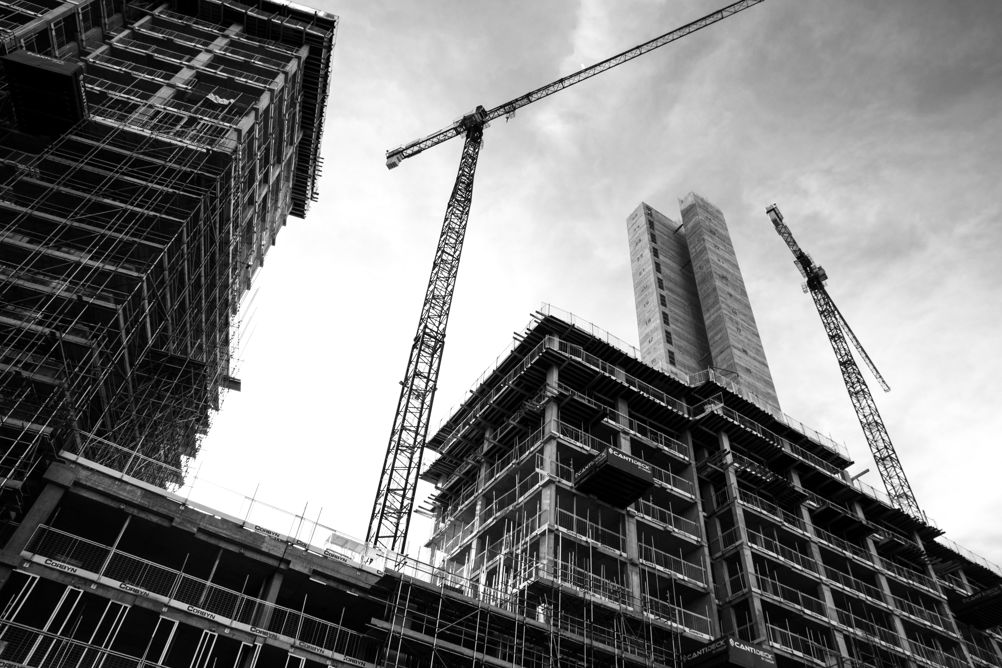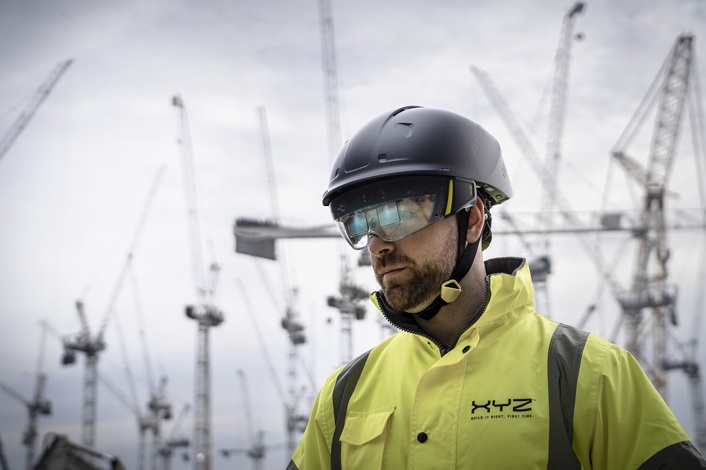Modern construction is about more than building with agility and keeping costs down. The industry is expanding quickly with an expected growth of $4.5 trillion[1] by 2030 and the advent of new technologies will be paramount to facilitating this growth. Important as these aims undoubtedly are, reducing emissions and building sustainably is also becoming an increasingly important consideration across every phase of construction projects.
Recent research from Faithful+Gould has revealed that buildings and construction are responsible for 39 per cent of all carbon emissions in the world[2]. It’s an alarming figure, and one which should compel the sector to address, and mitigate, the climate crisis whilst continuing to deliver high quality output.
The good news is progress is being made, and not a moment too soon. Net Zero 2050 targets are drawing ever closer and captivating the focus of construction professionals worldwide. It’s fair to say there’s now a definite appetite to not only build better, but to also build greener.
There’s still some way to go, as the industry not only looks to change many of the deep-rooted traditional processes, but also pay down decades of high-emission activity. Luckily, digital innovation is helping to make this low-carbon transition as pain-free as possible, and I believe we’ve only just scratched the surface of how technology can support the delivery of more sustainable buildings.

Essentially, the latest software and hardware coming to market, particularly advanced Artificial Intelligence (AI), Virtual Reality (VR) and Augmented Reality (AR) will equip the sector to achieve its green objectives, while also supporting greater efficiency and higher quality. But, as it’s been said, technology is only as good as the user, and reducing construction’s sizeable carbon footprint must start with active collaboration across the industry to make a sizeable enough impact both on and off-site.
Cooperation to achieve common goals
Here at XYZ Reality we’re leading by example, becoming a founding partner of ZERO[3], an ethical community of like-minded individuals and businesses aiming to drive across-the-board sustainability in construction.
This move has allowed us to get closer to understanding the current industry’s eco-landscape and empower our team to deliver timely solutions to achieve more sustainable outcomes.
The collaboration with like-minded business, which ZERO facilitates, is invaluable as it enables individual organisations to come together and explore a diverse range of traditional and new ways of reducing waste and lowering emissions.
Working together under the same banner, with the same common goal, means teams can plug knowledge gaps across the industry, combining efforts to increase the efficiency of processes and develop solutions holistically.
As a pioneer of Augmented Reality, having developed our engineering grade tool ‘The Atom’ specifically for the construction industry, our goal is to show how, working alongside other systems and processes, it can play a central role in making the build phase greener and leaner. Particularly, removing the scan and rework phase to salvage valuable materials, money and manpower, otherwise wasted through correcting errors and defects made during initial construction.
Eliminating rework to reduce waste
It’s already well documented that digital technology is helping to improve construction by increasing operational precision, allowing contractors to build to exact specifications and validate works in real-time, therefore reducing the likelihood of waste.
According to government statistics, in 2018 around 137 million tonnes[4] of construction waste was produced in the UK alone. By utilising new technologies, such as Engineering-Grade AR, to eliminate errors, we can put an end to unnecessary waste and even reduce costs associated with rework, all while keeping project schedules on track. Our cutting-edge AR solution, the Atom has already been deployed on construction sites across the world and is proving its worth by reducing rework to less than 1%. This is not only saving projects time and money, but also significantly minimising material usage and therefore, boosting sustainable credentials.
Given rework accounts for up to five per cent of all CO2 emissions within construction, removing or at least reducing this process, represents a significant step towards helping construction to become a carbon-neutral sector.
What digital innovations have we already seen?
We have already started to see technological advancements in construction, and the results have been encouraging. Digital asset information management platforms now have a permanent place in the industry with their ability to log large amounts of information online, such as waste levels and expenditure, without the need for reams of paper.
Another high-tech solution is AI-backed management platforms that we can link to sensors which monitor waste levels reducing resources spent on waste disposal.

At XYZ Reality[5], we are advocates for using outside-the-box thinking to revolutionise processes within construction, and I think there is more to come in the way of digital advancements.
We are proud of our own contribution of implementing Engineering-Grade AR, to achieve unrivalled accuracy, cutting down on excess materials and avoidable defects, to deliver more sustainable projects. This technology, specifically developed for the construction industry by construction professionals, is proven to reduce waste, improve quality, and ultimately radically limit carbon contributions.
Keeping all parties happy
Returning to the human factor, in addition to harnessing new technology, businesses across the construction sector must establish and implement solid green strategies to secure a good position for future performance in a competitive landscape.
This journey involves setting out transparent sustainability statements, plans, actions, and goals that provide insights into how businesses will fare in markets.
To achieve this goal, construction industry experts must carefully consider environmental, social and governance (ESG) criteria which play a crucial role in helping businesses monitor how sustainable their operations are, and ensure they are working to drive their activities towards goals of net-zero 2050.
With a clear strategy in place, leaders within construction can streamline investments and ensure the long-term viability of plans, creating lasting value for employees, society, and stakeholders. From a financial perspective, it would be wise for players in the industry to keep watertight records of their activities so that investors and stakeholders feel their funds are safe.
There’s no doubt we will see digital adoption growing more as the green agenda becomes legally binding, and business leaders realise technology can help comply with tougher regulation.
We must all make an ongoing commitment to reduce carbon emissions within construction for the greater good of our environment and society. Construction companies across the world are already seeing the huge benefits associated with deploying digital tools for sustainable initiatives. Businesses that harness the power of Augmented Reality and other technology that favours sustainability are proving to be a cut above the competition.
By adopting sustainable construction practices early, we can make a huge difference to the environment and be a leader in the green agenda. The adoption of technology that helps us get there should be openly embraced by all as we move towards a more innovative and greener industry.

David Mitchell is Founder & CEO at XYZ Reality
[1] https://www.marsh.com/tn/industries/construction/insights/global-construction-outlook.html#:~:text=Construction%20will%20be%20an%20economic,average%20approximately%203.5%25%20per%20annum.
[2] https://www.iea.org/reports/global-status-report-for-buildings-and-construction-2019
[3] https://www.zeroconstruct.com/about
[4] https://www.constructionproducts.org.uk/media/557062/how-much-construction-waste-is-there.pdf
[5] https://www.xyzreality.com/











Water Sector Talent Exodus Could Cripple The Sector
Well let´s do a little experiment. My last (10.4.25) half-yearly water/waste water bill from Severn Trent was £98.29. How much does not-for-profit Dŵr...